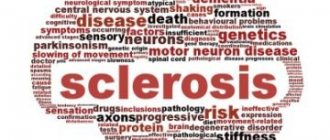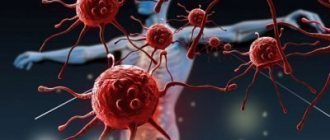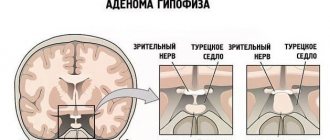The nervous system, as we know, consists of neurons. These special cells are able to receive, store and process information; they are responsible for connecting the body with the outside world and for the operation of all systems of this body. Memory, attention, thinking, imagination, creativity - all these are the results of the work of neurons. However, all this diverse activity could not take place if the neuron did not have such an important element as a synapse. In a certain sense, it is the synapses, and not the neurons themselves, that are the basis of the nervous system.
What is a synapse
To put it too simply, a synapse is the junction of two nerve cells. It would seem, what's special here? But in fact, a synapse is a rather complex device, thanks to which the entire mechanism for collecting and processing information can work properly. A synapse is what allows you to transform the simplest signals and unconditioned reflexes into the most complex patterns of mental activity: ideas, ideas, images, works of art, scientific theories. What is the structure of a synapse?
The concept of "growth mindset"
Only by recognizing this concept does it make sense to read on and choose neuroplasticity exercises that suit your tastes.
The concept of growth mindset accepts that innate skills and abilities can be developed and improved.
A person with a growth mindset believes that they can become smarter, better, and more experienced through constant effort, which is what neuroplasticity involves.
All business content in a convenient format. Interviews, cases, life hacks of the corporation. world - in our telegram channel. Join us!
Before moving on to the practical development of neural connections, it is important to recognize that you can “charge” your brain and learn new skills at any age.
First of all, get rid of harmful beliefs:
- what I do needs constant approval
- if I start and quit, I won't be taken seriously
- after 20-30-45 it’s too late to start anything
- Children are like sponges, and it will take me forever to develop the most minimal
- all this will take too much time, and I don’t even have a minute
- nothing can be changed.
And apply useful ones:
- It doesn’t matter how old I am, what matters is what I pay attention to
- I do this for myself
- I’m lucky that scientists have learned and talked about brain development, I need to take advantage of this;
- I'll try and see
- there's nothing stopping me from trying.
Synapse structure
Each nerve cell has a large number of processes. All of these processes, except one, are dendrites; these are short and highly branched formations that are designed to receive information from other neurons. The remaining long process is called an axon; it is responsible for transmitting information from a given nerve cell to the next.
Connected by processes, nerve cells form a complex network through which signals travel in different directions. Scattered signals from the peripheral nervous system enter the central one, where from them the body forms a holistic picture of the world, decides what to do in the future, and sends signals to the necessary organs. The axon of a nerve cell can reach an impressive length - up to one and a half meters. And this is only in the human body. In giraffes, axons in the spinal cord can reach up to five meters. Apparently, in larger extinct animals, such as dinosaurs, the axons of nerve cells in the spinal cord were even longer. It turns out that nerve cells are the largest cells in the body.
However, most often a signal cannot pass directly from one nerve cell to another, because the space between the dendrites and the axon is filled with intercellular substance. In order for nervous information to pass from one process to another, it is necessary to build a kind of bridge. Such bridges are called neurotransmitters, or neurotransmitters; They are formed as a result of biochemical reactions and are protein molecules.
The nerve cells themselves are very small - the largest of them usually do not exceed a length of 100 micrometers. The processes of neurons, therefore, are completely microscopic in size. However, even at this microscopic level, the structure of the synapse is quite complex. It consists of three departments. The first is a thickening at the end of the axon called the presynaptic membrane, which is necessary for the formation of neurotransmitters. The second section is a similar thickening at the end of the dendrite, which serves to receive signals from the neurotransmitter. Between them there is a third section - the synaptic cleft itself, in which neurotransmitters are formed.
But the structure of the synapse is not limited to this. On the thickening of the axon there are special formations - synaptic vesicles, which contain either a neurotransmitter or an enzyme that destroys the neurotransmitter. And on the thickening of the dendrite there are receptors that receive signals from a specific neurotransmitter.
This structure of the synapse is characteristic of the chemical type. There are also electrical synapses that have a slightly different structure. They do not produce neurotransmitters, since electrical signals pass unhindered through the intercellular substance. Moreover, the distance between membranes in an electrical synapse is much smaller than in a chemical one, due to which the pressure of the intercellular substance is weaker. In addition, the membranes are connected by so-called connexons - special protein formations.
There are also mixed synapses, in which the chemical bond is a factor that enhances the electrical transmission of the signal.
The most common are chemical synapses, which are the typical variety. Their role is especially great in the nervous system of mammals.
As we have already found out, synapses serve to connect nerve cells and transmit chemical and electrical signals between them. Synapses form neural circuits, which, when connected to each other, form complex neural networks. It is difficult to imagine what volumes of information circulate in the human nervous system. Today it is believed that the brain alone contains about 100 billion nerve cells; each of them has up to ten thousand synapses, that is, connections with other cells. Cells exchange signals at a speed of 100 meters per second. Thus, the human brain is an incredible supercomputer, with capabilities surpassing the entire Internet space of the planet. Scientists recently simulated second-by-second brain activity on one of the most powerful supercomputers in the world; and on him this second “stretched” for as much as forty minutes. So, apparently, artificial intelligence will not truly replace the natural human brain any time soon.
Strictly speaking, the level of intelligence of humans and other animals largely depends not on the volume of the brain or the number of neurons in it, but on the number of connections between neurons. Therefore, it is not at all surprising why animals with significantly smaller brains sometimes show higher intellectual activity than animals with larger brains. Thus, the behavior of ants sometimes seems comparable to that of humans, although they, like other insects, do not have a real brain at all. Lizards, on the contrary, have a real brain, but their mental abilities are much more modest. The secret here is also that ants, in addition to the “internal” nervous system, have a kind of “external” one: each ant in the community can be imagined as a kind of meganeuron connected with other similar ants, which is why a single “group intelligence” is formed.
Axons and dendrites do not form immediately in nerve cells. Moreover, it is the axon that breaks through first, which begins to grow vigorously and make its way in the surrounding space. This is how the growth of the nerve cell itself begins. Eventually the axon meets the dendrites of other nerve cells and forms a synapse with them.
From the structure of the synapse it is clear that the transmission of nerve impulses is one-way. That is, the reverse signal path is impossible - from dendrites to the axon. In addition, the signal is transmitted with a slight delay - the so-called “synaptic delay”, which is about 0.5 milliseconds.
It is known that the nervous system contains neurons that do not have axons. Nobody knows yet how such cells work and what they are needed for.
Interestingly, scientists conducted studies of the functioning of nerve cells on squids. Their nerve cells are so large that they are visible to the naked eye. This made it possible to insert electrodes into them and measure the electrical potential in different parts of the cell. Researchers Hodgkin, Elks and Huxley were awarded the Nobel Prize for such work in 1963.
Where is the noise coming from?
Interestingly, patterns of spontaneous neuronal activity emerge early in brain development, before sensory perception is formed. For example, spontaneous activity in the visual cortex is observed even before the child first opens his eyes. After this, the imagination is connected with real visual images.
Spontaneous activity is inherent in us from an early age, but its nature is still unknown. Perhaps it is genetically predetermined, but it is most likely associated with the process of self-organization (how a self-organizing system can form complex patterns is described in the theory of dynamic systems). One might assume that our entire mind is determined by genes, but this is impossible:
There is too little information in DNA to identify all the many synaptic connections in the brain. Only a few simple algorithms can be genetically encoded
for the early stages of brain development, which will give impetus to the creation and development of a certain structure. The starting point for such a process can be just a few basic rules—for example, how neurons form circuits and how circuit activity in turn changes connections in a feedback loop.
Classification of synapses
There are several classifications of nerve cell connections. We considered the first of them above - this is the division into chemical, electrical and mixed synapses. Synapses can also be divided according to the nature of the transmitted signal: excitatory
and
braking
.
Synapses can also be divided by location: central
, located in the brain, and
peripheral
, located in the peripheral nervous system.
Synapses are also divided depending on the neurotransmitters they produce. Some produce norepinephrine, others produce acetylcholine, serotonin, glutamate and others. In total, there are about sixty types of neurotransmitters, each of which has a specific function. Thus, norepinephrine is an stimulant; it activates all systems of the body and creates a feeling of rage. Dopamine is a happiness hormone that imparts a state of bliss to the body and generates positive emotions; it is also responsible for cognitive processes. Both an excess and a lack of neurotransmitters leads to various disorders in the nervous system and the body as a whole. Thus, a lack of dopamine causes depression, loss of strength, and leads to dementia. An excess of glutamate can lead to the death of nerve cells.
The structure and functioning of the biological nervous system allowed scientists to create its artificial analogue. In an artificial neural network, connections between individual “neurons” are also called synapses, and they contain both “dendrites” and “axons”. In artificial neural networks, it is possible to simulate even individual types of signals - for example, there are excitatory and inhibitory signals. Of course, an artificial neural network is a simplified model of a real, biological one, but as technology develops, the model becomes more detailed. Thus, in 2020, in Sweden, researchers created one of the most advanced artificial analogues of a neuron to date. The device was created based on organic bioelectronics. Such an artificial neuron most fully replicates the work of a natural nerve cell and can even communicate with other neurons.
History of discovery
- In 1897, Sherrington formulated the idea of synapses.
- Golgi and Ramón y Cajal received the Nobel Prize in 1906 for their research into the nervous system, including synaptic transmission.
- In 1921, the Austrian scientist O. Loewi established the chemical nature of the transmission of excitation through synapses and the role of acetylcholine in it. Received the Nobel Prize in 1936 together with H. Dale.
- In 1933, the Soviet scientist A.V. Kibyakov established the role of adrenaline in synaptic transmission.
- 1970 - B. Katz (Great Britain), U. v. Euler (Sweden) and J. Axelrod (USA) received the Nobel Prize for their discovery of the role of norepinephrine in synaptic transmission.










